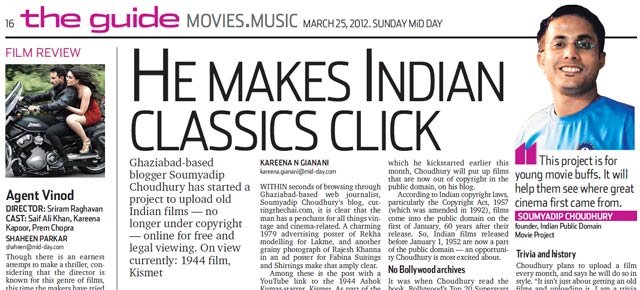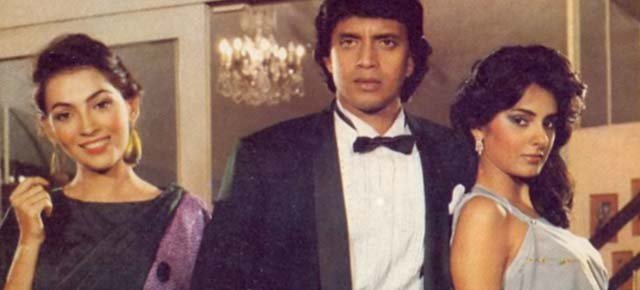[This post is part of the 100 Years of Indian Cinema celebrations on Cutting the Chai]
In May this year when Indian cinema turned 100, the Department of Posts announced the release of Rs 5 commemorative stamps on 50 icons of Indian cinema. The stamps went sale from June. Though the list of the 50 stalwarts of Indian cinema (includes 18 Dadasaheb Phalke awardees) is impressive, many would find notable names missing. But that’s inevitable.
If you wish to purchase these stamps, contact your nearest philatelic bureau.
(In alphabetical order)
- Allu Ramalingiah
- Ashok Kumar
- Ashok Mehta
- Balraj Sahni
- Bhalji Pendharkar
- Bhanumathi
- Bhupen Hazarika
- BN Sircar
- BR Chopra
- Chetan Anand
- CV Sridhar
- Dev Anand
- Dhirendranath Ganguly
- Durga Khote
- Geeta Dutt
- Hrishikesh Mukherjee
- Kamaal Amrohi
- Kannadasan
- Madan Mohan
- Majrooh Sultanpuri
- Mehmood
- Motilal
- Nagesh
- Naushad
- Nitin Bose
- OP Nayyar
- Prem Nazir
- Prithviraj Kapoor
- RD Burman
- Raichand Boral
- Raj Khosla
- Rajendra Kumar
- Rajesh Khanna
- Ruby Myers
- SV Ranga Rao
- Salil Chowdhury
- Sanjeev Kumar
- Shailendra
- Shakeel Badayuni
- Shammi Kapoor
- Shankar Jaikishan
- Smita Patil
- Sohrab Modi
- Suraiya
- Tapan Sinha
- Tarachand Barjatya
- TR Sundaram
- Utpal Dutt
- Vishnu Vardhan
- Yash Chopra






Text from the First Day Cover (embedded below)
100 Years of Indian Cinema
On 3rd May, 1913, when Dada Saheb Phalke, the father of Indian Cinema, released India’s first full length feature film Raja Harishchandra, it held the viewers in a thrall. As the next one hundred years would prove, what he brought to India that day was not just a medium of mass entertainment, but also a powerful tool that would shape social engagement, culture and behaviour in this diverse country.
The release of India’s first talkie Alam Ara produced by Ardeshir Irani, was the next landmark event in the history of Indian cinema. The movie which released on 14th March, 1931 at the Majestic Cinema, Mumbai starring Zubeida, Master Vettal and Prithvi Raj Kapoor was so popular that police had to be called in to control the crowd. The commercial success of Alam Ara brought an end to the silent era. The talkies changed the face of Indian cinema. Apart from looks, the actors were now required to have a commanding voice and singing skills, as music became a defining element of Indian cinema. The first talkie film in Bengali Jumai Shasthi, Telugu Bhakta Prahlad and Tamil Kalidas were also released in the same year.
The 1940s was a tumultuous decade for the world and for India, which was ravaged by war and drastic political changes, Indian cinema, however, made some firm strides during this period. The 40s and 50s formed the golden era of film music. Shankar Jaikishan, OP Nayyar, Madan Mohan, C Ramachandra, Salil Chowdhury, Naushad and SD Burman all with their distinct styles – produced some of the most unforgettable melodies. The 50s also marked a watershed in the matter of themes, with social issues being taken up in movies by enlightened film makers to educate the masses.
The new trend continued into the 60s, with filmmakers like Satyajit Ray, Ritwik Ghatak, Guru Dutt, Bimal Roy, Mehboob Khan, K Asif, Raj Kapoor, KV Reddy, LV Prasad and Ramu Kariat directing movies like Pyasa, Do Bigha Zamin, Muqhal-e-Azam; Pather Panchali, Mother India, Maya Bazaar and Chemmeen and going on to win national and international acclaim.
The 70s saw the birth of a genre, masala movie, in Indian cinema which promised instant attraction and wholesome entertainment. During this era, Parallel Cinema, with higher aesthetic values than commercial cinema, emerged as a movement. Parallel Cinema was also instrumental in the emergence of women filmmakers like Aparna Sen, Prema Karanth, Meera Nayar, Sai Paranjape, Kalpana Lajmi and others in the 80s.
The 90s brought with it a mixed bag of films – romantic thrillers, action and comedy. Introduction of technology with Dolby digital sound effects, advanced special effects and modern choreography led to a striking upgrade in quality on the silver screen. Simultaneously, investment from corporate sector also started flowing in along with fine scripts and improved production quality.
Indian cinema has found global appeal at the turn of the 21st century. It has reached out to the international audiences through commercial releases and regular screenings at major international film festivals.
Nothing captures the essence of popular culture in present day India better than our films. Department of Posts is happy to be a part of the century long journey of Indian cinema by releasing six Miniature Sheets commemorating the contribution of fifty iconic personalities of Indian Cinema. The first two Miniature Sheets with nine stamps each depict some Dada Saheb Phalke awardees whereas rest with eight stamps each depict the personalities from various fields of cinema.
Credits
Text: Based on the material furnished by Information & Broadcasting Ministry
Stamp & FDC: Kamleshwar Singh
Cancellation: Nenu Gupta
First Day Cover: 100 Years of Indian Cinema commemorative stamps
A picture collage of the 50 commemorative India Cinema 100 stamps (to use as wallpaper, header images, backgrounds).
Click here to download high-resolution image (5120×2880 pixels, 4.37 MB, Zipped JPG)
[tbpspa]








One comment
100 Years of Indian Cinema: India Post’s 50 commemorative stamps